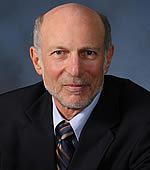ECU to host sickle cell education event Friday

Dr. Beng Fuh
GREENVILLE, N.C. — A hundred years after sickle-cell disease was identified, people around the world still suffer from its acute pains and chronic complications. Residents of eastern North Carolina are no different.
That’s one reason experts at the Brody School of Medicine at East Carolina University are hosting an educational event Friday, Sept. 17, where health care professionals and the public can learn more about the disease.
The event will be from 9 a.m.-2 p.m. at the Monroe Eastern AHEC Conference Center, where presentations include the history of sickle-cell disease, the latest treatment practices and patient stories. The event will include talks from people with sickle cell disease. More information about the program is available by calling 744-5220.
“There has been much progress in the management of sickle cell disease in the past 100 years, but much remains to be done,” said Dr. Beng Fuh, an assistant professor of pediatrics at ECU. “Improving sickle cell disease care involves not just medical practitioners but also teachers and schools, parents and families, neighbors and policy makers as well as research scientists.”
The event will also introduce the ECU CareCard, a wallet size card with basic information on sickle cell patients and contact numbers for medical providers. Fuh said the card should facilitate contact between the emergency medical providers and specialists, improve the care provided in the emergency room by providing input from specialists, shorten emergency room waiting time and convey the message that sickle cell disease can cause life-threatening complications.
Sickle cell disease is a genetic disorder that causes red blood cells to have an abnormal shape. That shape leads to various complications, such as vaso-occlusive crisis, caused when the cells block blood flow to an organ, causing severe pain and, frequently, organ damage. Some patients undergo periodic blood transfusions as part of their treatment.
Sickle cell disease normally affects people who live in or whose ancestors lived in tropical or sub-tropical areas where malaria is prevalent. Carrying a single sickle cell gene increases resistance to malaria. Carrying two genes leads to the disease.
In North Carolina, approximately 125 infants are born with sickle cell disease yearly, Fuh said, about 25 of those in eastern North Carolina.
ECU’s sickle cell disease program is one of the largest in the state with approximately 900 patients, Fuh said. It provides adult and pediatric services as well as consultations for surrounding hospitals and physicians.
The centennial of the identification of sickle cell has added significance for ECU. Dr. Todd Savitt, a medical historian and faculty member at the Brody School of Medicine, wrote the 1989 article in the Journal of the American Medical Association that described the work Chicago physician James B. Herrick and his intern, Ernest E. Irons, did from 1904 to 1907 with patient William Clement Noel, a dental student from the island nation of Grenada. Herrick published about the new disease in 1910.
“The disease was around,” Savitt said. “Why was it diagnosed in this guy at that time and not someone else? Noel was well-educated and could give a good history to his physicians. He wasn’t the typical person of color from the South.”
Knowing Noel’s identity shows that “in 1910, a real human being had this disease, and here’s who he was,” Savitt said. “It puts a human face on the origin of a disease that’s so devastating and has had such a rocky history in this country. He never knew he was the first sickle cell patient, and that’s sad.”
Savitt has also written about the second person diagnosed with the disease, Ellen Anthony. She was a black woman from Virginia who suffered for years without a definitive diagnosis, though doctors knew she had abnormal blood cells.
Savitt spoke at sickle cell conferences earlier this year in Florida, Grenada and Ghana.

Dr. Todd Savitt